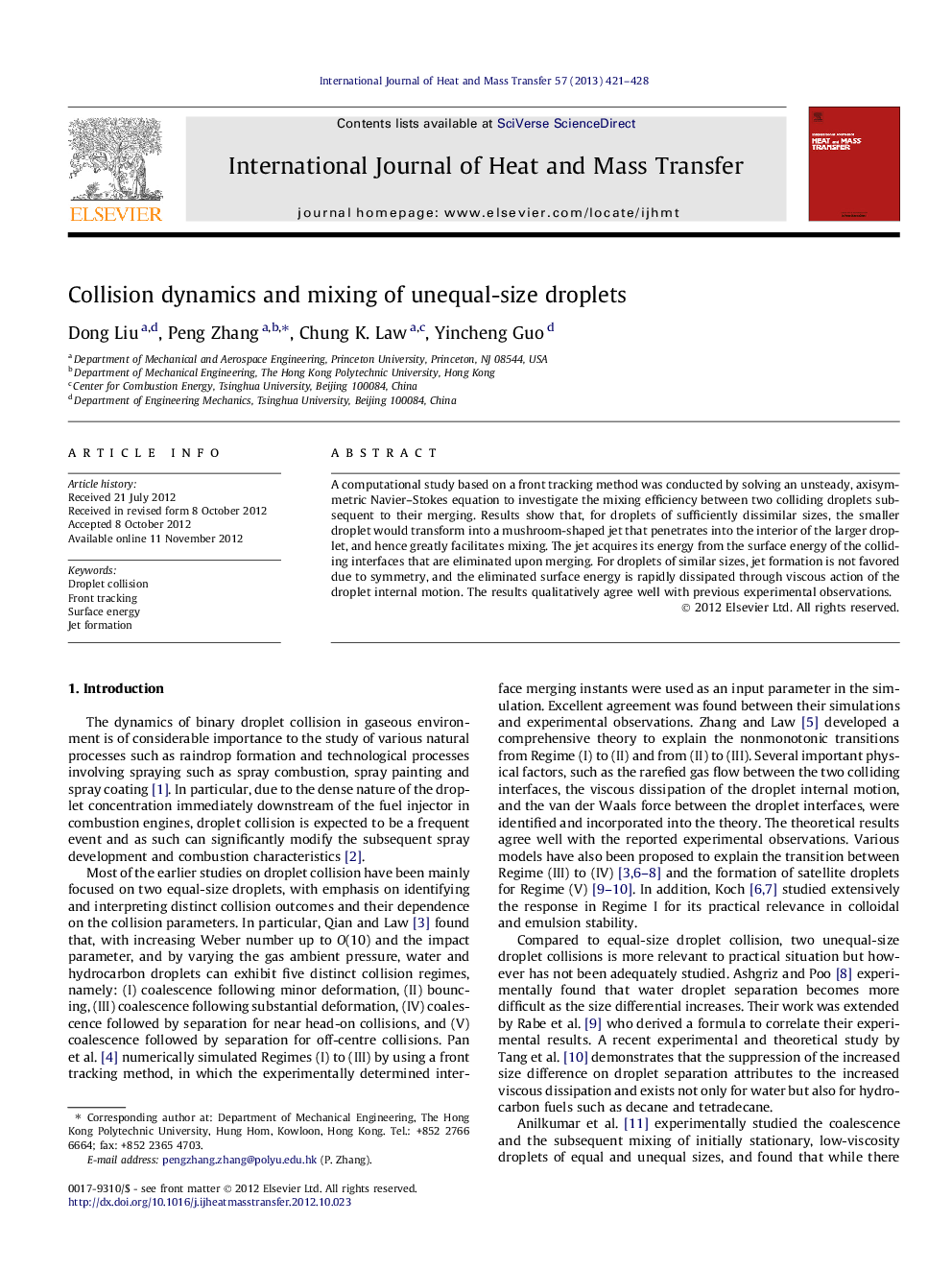| Article ID | Journal | Published Year | Pages | File Type |
|---|---|---|---|---|
| 658526 | International Journal of Heat and Mass Transfer | 2013 | 8 Pages |
Abstract
A computational study based on a front tracking method was conducted by solving an unsteady, axisymmetric Navier-Stokes equation to investigate the mixing efficiency between two colliding droplets subsequent to their merging. Results show that, for droplets of sufficiently dissimilar sizes, the smaller droplet would transform into a mushroom-shaped jet that penetrates into the interior of the larger droplet, and hence greatly facilitates mixing. The jet acquires its energy from the surface energy of the colliding interfaces that are eliminated upon merging. For droplets of similar sizes, jet formation is not favored due to symmetry, and the eliminated surface energy is rapidly dissipated through viscous action of the droplet internal motion. The results qualitatively agree well with previous experimental observations.
Related Topics
Physical Sciences and Engineering
Chemical Engineering
Fluid Flow and Transfer Processes
Authors
Dong Liu, Peng Zhang, Chung K. Law, Yincheng Guo,
